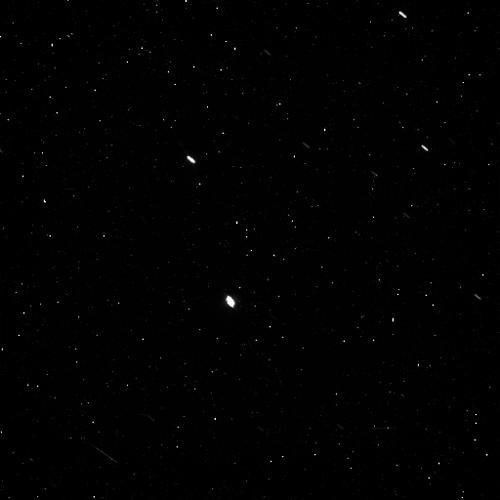Suttungr
Contents

Discovery
Suttungr was discovered in 2000 by Brett J. Gladman, John J. Kavelaars, Jean-Marc Petit, Hans Scholl, Matthew J. Holman, Brian G. Marsden, Phillip D. Nicholson, and Joseph A. Burns using the 3.6-m Canada-France-Hawaii reflector on Mauna Kea, Hawaii, with adaptive optics. They discovered seven other Saturnian moons at the same time: Tarvos, Ijiraq, Thrymr, Skathi, Siarnaq, Erriapus, and Mundilfari.
Overview
Suttungr has a mean radius of 2.2 miles (3.5 kilometers), assuming an albedo (a measure of how reflective the surface is) of 0.06. It orbits Saturn at an inclination of about 174 degrees and an eccentricity of about 0.1. At a mean distance of 12.1 million miles (19.5 million kilometers) from Saturn, the moon takes about 1,017 Earth days to complete one orbit.
Suttungr is a member of the Norse group of moons. These "irregular" moons have retrograde orbits around Saturn — traveling around in the opposite direction from the planet's rotation. Suttungr and the other Norse moons also have eccentric orbits, meaning they are more elongated than circular.
Like Saturn's other irregular moons, Suttungr is thought to be an object that was captured by Saturn's gravity, rather than having accreted from the dusty disk that surrounded the newly formed planet as the regular moons are thought to have done.
How Suttungr Got Its Name
Originally called S/2000 S12, Suttungr was named for Suttungr (also spelled Suttung), a giant in Norse mythology. Two dwarfs were responsible for the death of Suttungr's father in a "boating accident." Those same two dwarfs also murdered his mother. So Suttungr captured the dwarfs and took them to a reef, planning to leave them there to drown when the high tide came in. However, Suttung relented when the dwarfs offered to give him special mead (an alcoholic drink made of honey and, in this special case, the blood of a traveling wise man they had killed) which made anyone who drank the mead a poet or scholar. Suttungr ultimately lost the mead to Odin, the supreme Norse god.

































